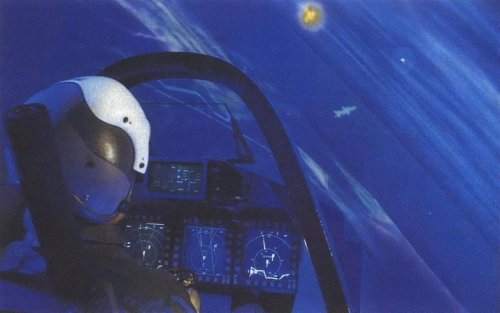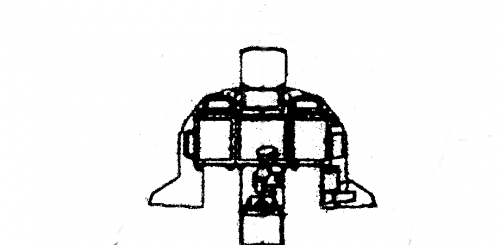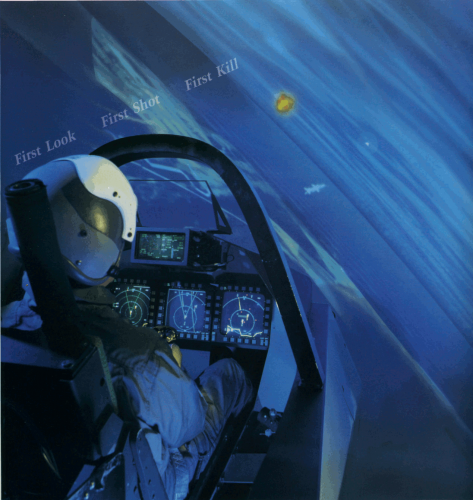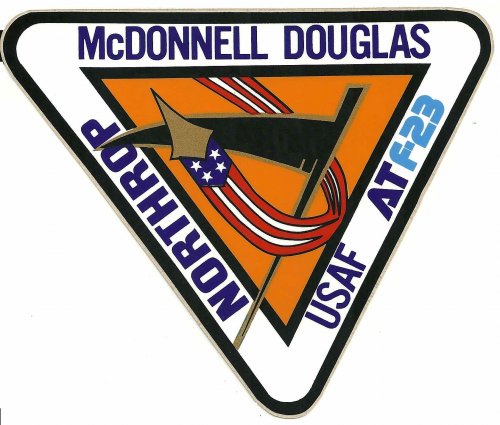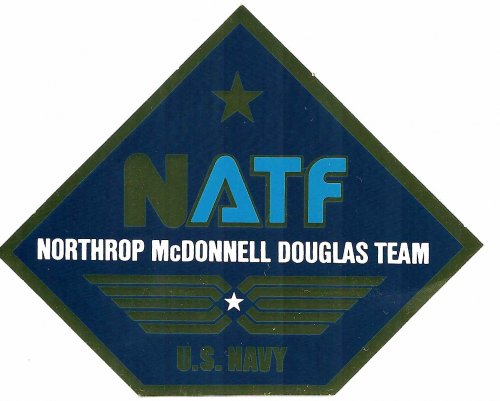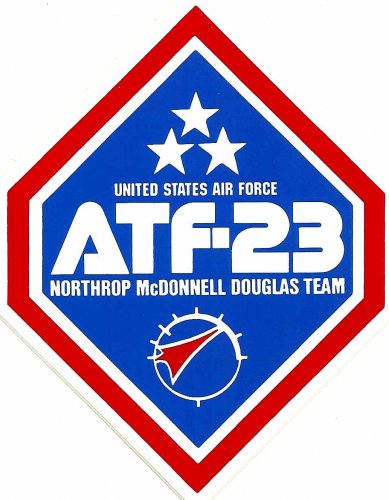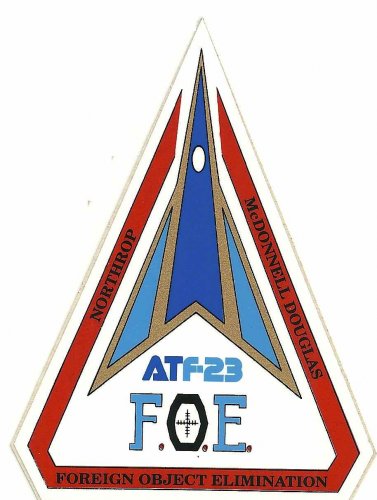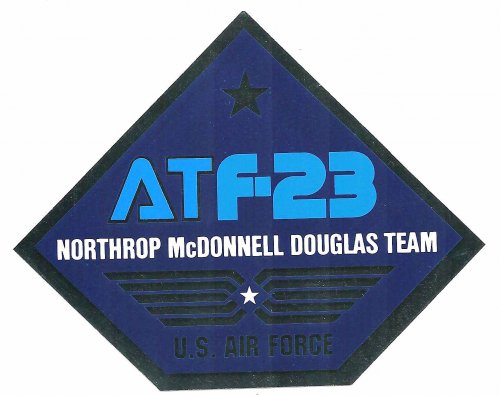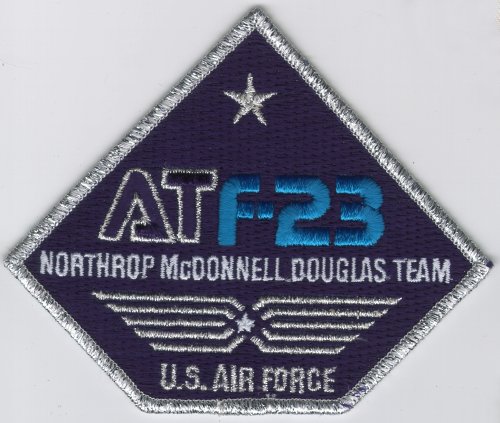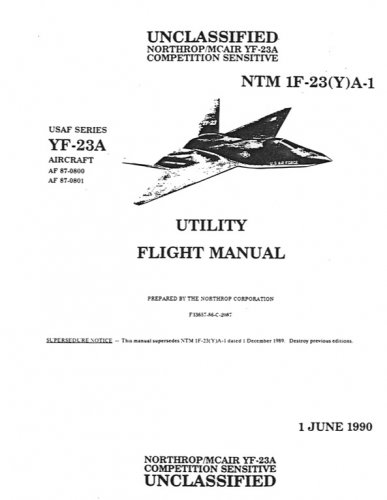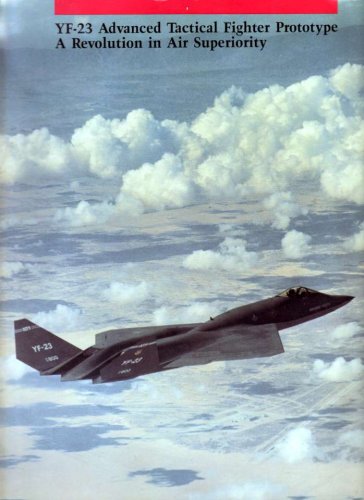Hi all,
I always thought Northrop's YF-23 was quite a fascinating aircraft with some rather unusual characteristics not seen in many production aircraft. Certainly the ruddervators (a term we also used on our DBF aircraft this year) and the overall slenderness gave the aircraft a very slick appearance. It's interesting to note that the aircraft's fuselage "barrel" and engine nacelles appear to taper off and "waists", so to speak, close to the longitudinal position of the wingtips, probably to minimize maximum cross-sectional area. It doesn't appear that its competitor, the YF-22, or many other aircraft for that matter, takes such an aggressive approach towards area ruling. It does make me wonder what its supersonic parasitic drag will look like and how it compares to other aircraft; Mr. Dan Raymer's aircraft design book has a chart of the Cd0 versus Mach number of various contemporary and vintage US fighters, as well as the hypothetical Rockwell ATF proposal, which put much more focus on supercruise before the Air Force amped up the stealth requirements.
(Side note: Mr. Raymer gave a talk about aircraft design process here at UCLA last year, and I took the opportunity to ask about his involvement and opinion of the ATF program that led to the F-22. Apparently, the heavily area-ruled design by Rockwell reflected what the contractors expected the Air Force was pursuing. In Mr. Raymer's opinion, the much more stringent stealth requirements that were added screwed just about every contractor other than Lockheed and Northrop since these two companies were the only ones with much experience, and realistically can't be matched by other companies.)
I took the opportunity to purchase Scott Lowther's Aerospace Projects Review to get a closer look at the proposed production F-23A (a great purchase, as it includes some detailed DWGs of the YF-23, F-23A, and the NATF version as well). It's interesting to see expected similarities and some notable differences. The inlet change is rather interesting, since it doesn't appear to have a visible boundary layer diverter system such as a splitter plate gap. Perhaps the half-cone acts in a manner similar to the DSI hump of the F-35? That said, it's also possible that the inlet incorporates some kind of porous bleed system similar to the grid on the F-22 that isn't depicted here. It would also be interesting to see the shock structure generated by the intake and how the serrated cowl plays into that.
It's also interesting to see the F-23A's longitudinal cross-section distribution. Perhaps I haven't seen such plots of other fighters, but it seems remarkable how well and smooth the aircraft's distribution conforms to the ideal Mach 1.5 body (the Mach 1.0 distribution is lumpier, but the aircraft probably isn't optimized for this speed). In any case, it seems like the aircraft would have quite a favorable empirical wave drag efficiency at this design speed. Does a similar plot exist for the YF-23? I also had a quick look at the fuselage cross sections of both the F-23 and YF-23. The nacelles have been rounded off, but it appears that the volume and cross section near the wingtips have expanded (the trench between the nacelles don't seem as deep, nacelles rounds off more gradually to the wings). Those sections have grayed out areas for fuel tank, so maybe this was to increase fuel volume? It would be interesting to see what effect this has on surface area and Amax (and thus fineness ratio Amax/l) compared to the F-23. The production aircraft is also about 3 feet longer, and chines aren't nearly as pronounced. Maybe with the YF-23 fuselage cross sections, perhaps someone with CAD or some kind of pixel-counting software can generate a rough longitudinal cross section distribution? It would be an interesting comparison, though I'd imagine that doing all the Mach-plane cross section cuts would be a pain!
Just my $0.02. I just discovered this thread and haven't read through it all, and I may have restated what many already know! In any case, very radical and beautiful aircraft, something I wish I could see fly. Unfortunately the ATF technology demonstrators flew before I was born, but one can imagine I suppose.

